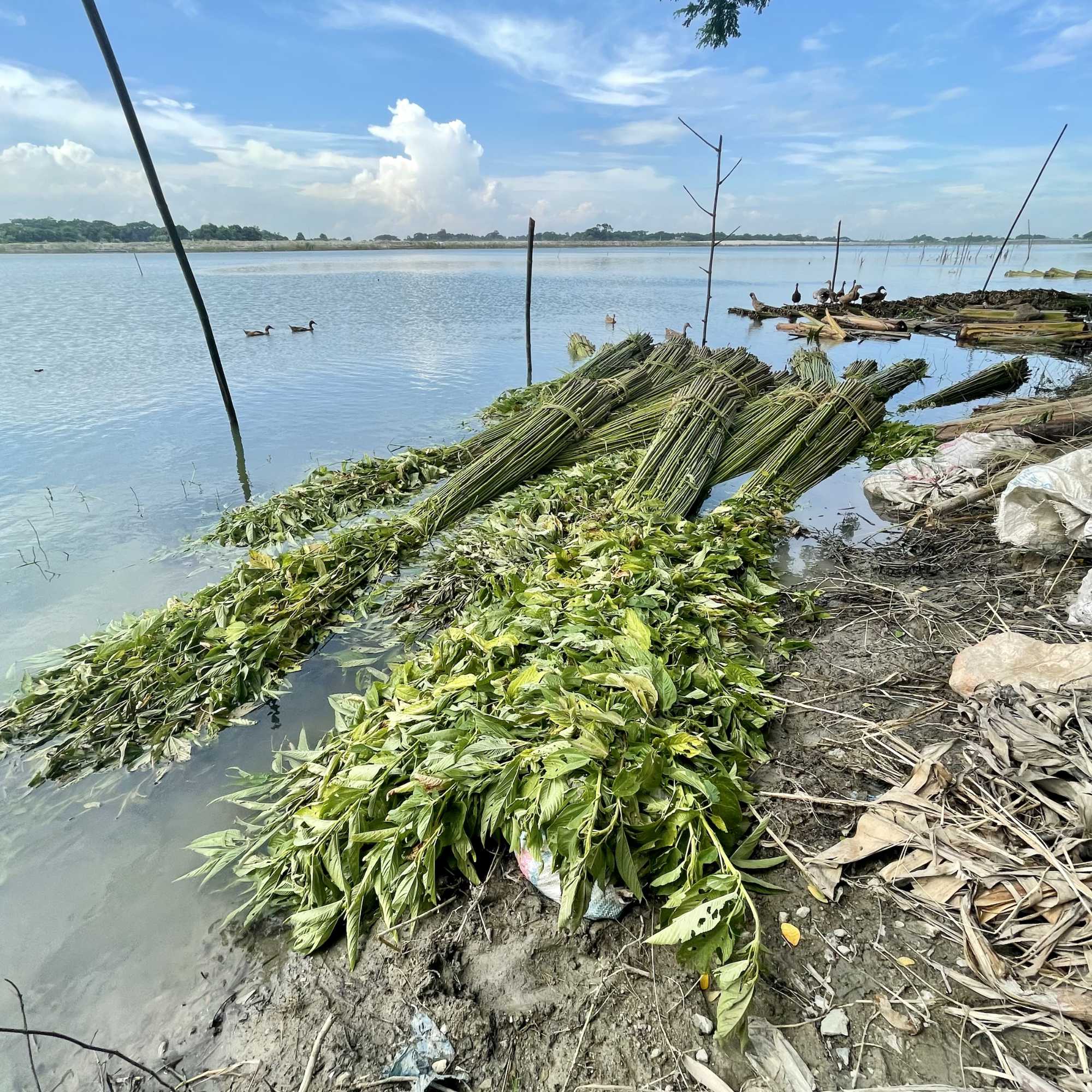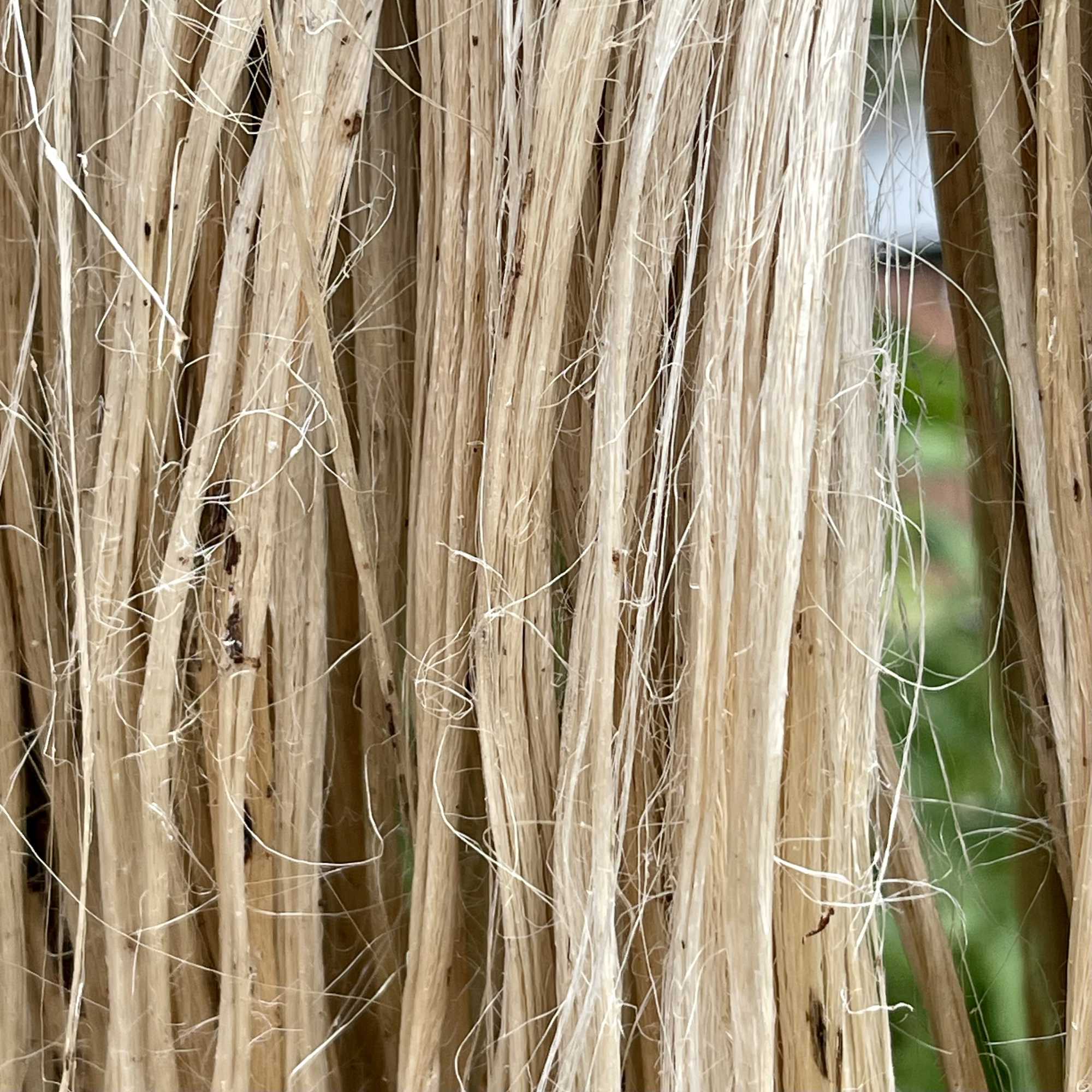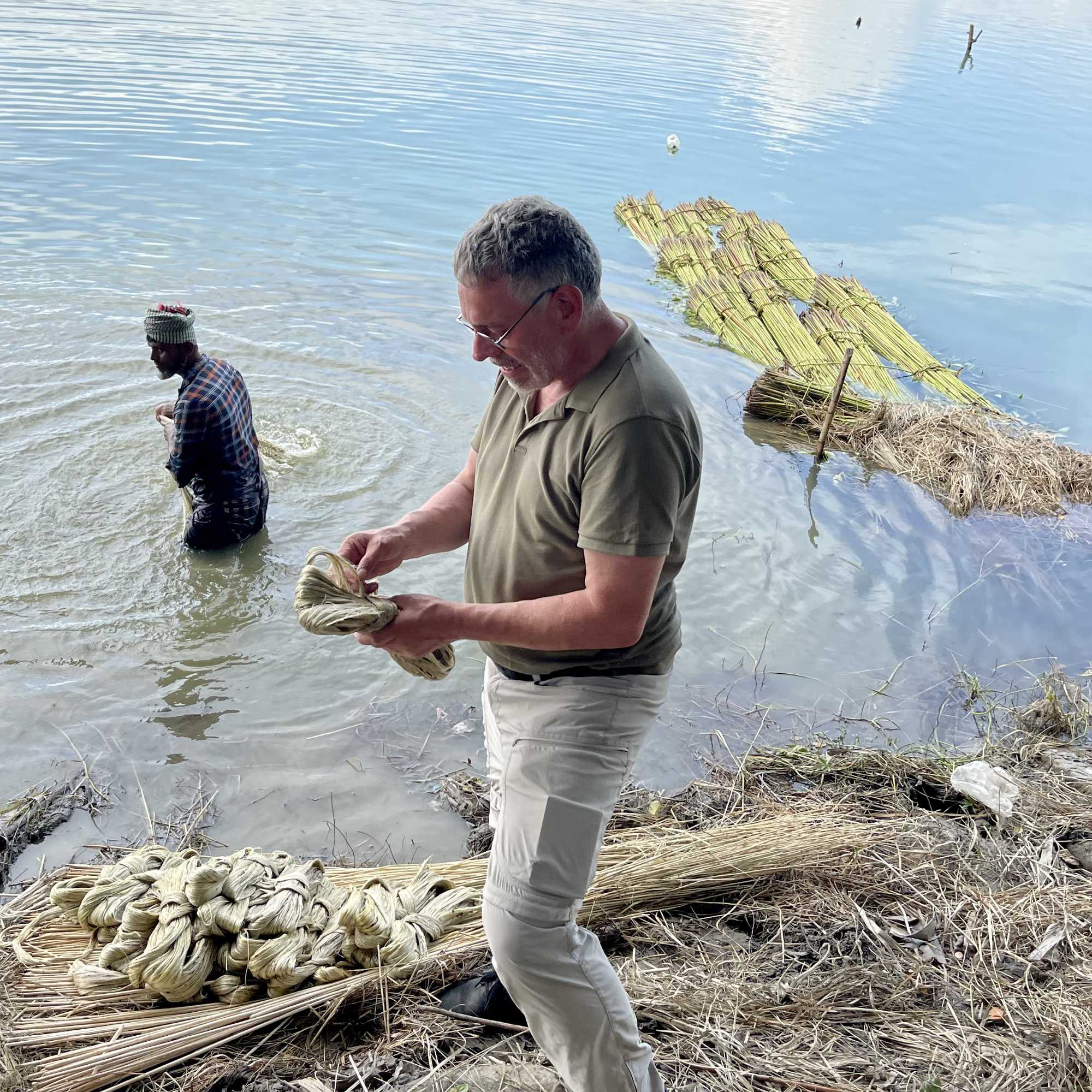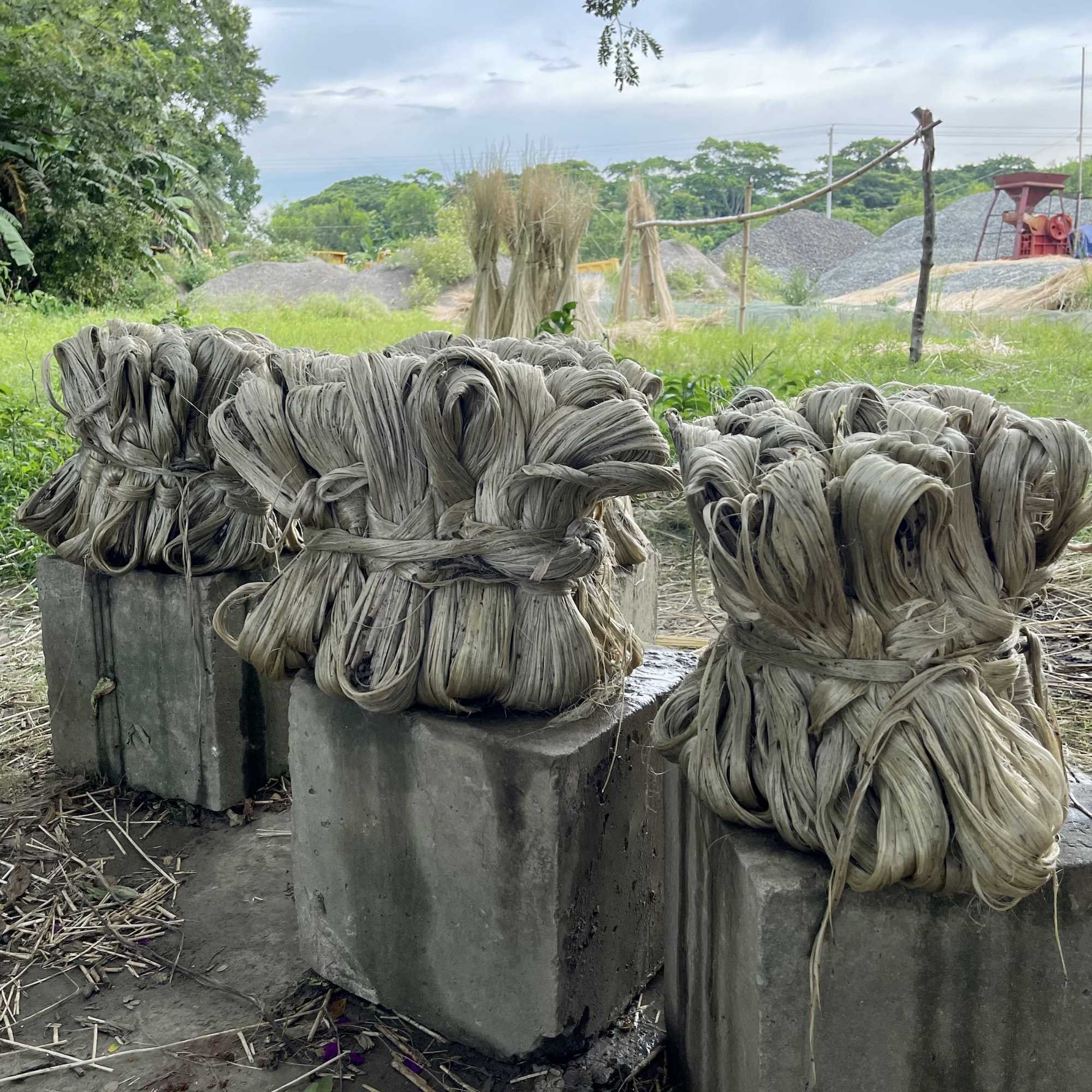The Jute Story: from plant to yarn
PART 2/5
Once the jute plants have been pulled from the soil, they need to be soaked in water to soften them enough to strip out the filaments, which are then dried, picking up the distinct golden colour, and prepared for transport to the yarn mill.
I was extremely fortunate to be in Bengal at exactly the right time, and informed it’s not always like this. The year’s monsoon had been good in this district, known for its fine grades, so plants were being cropped early. Up north in the East Bogura District, severe flooding had practically wiped out the crop. Another reminder of how susceptible the region is to climate change, and how this can adversely affect jute from season to season.

Once the jute plant is pulled from the soil, the farmer chops off the roots, and bundles about 50 stems together, still with their leaves, and ties using stripped green bark of the previous retted batch. He then carries the long bundle up to and over the service roads and dual carriageway between the traffic. The other side is an incline down to the river.
The outer epidermis bark of a jute plant is stiffer at cropping, and requires softening by soaking in clean water for a few days. The temperature and flow will determine the right time before bacteria can damage filaments. It strips off, again, very much like the bark of elder.
The bright green bark is also used to tie bundles of filaments, or the central xylem – long woody hollow sticks used for placing filament bundles coming out of the water to drain, and for roofing or flooring material in the shacks where they live. Nothing is wasted.
The inner xylem core of the plant is like a woody straw with an inside diameter of ø3–4mm, sucking water up through the plant growing at up to a meter a month. The strong hydrophilic nature of the plant is unmistakable. It requires water, and lots of it. The arrival and consistency of the Bay of Bengal Branch of the Southwest Monsoon is critical.
The long jute fibre is taken from the cortex between the bark and xylem, stripped out by hand in laborious effort. There is no mechanisation. I brought back samples of plant stem as examples. Once the plant has dried, the fibres are practically solid.


After retting, the fibre is further softened soaked under, and then washed in the water. As is comes out, it’s still a dull light green colour. Photosynthesis obvious. The farmer flails it a few times in the river a final time, before tying in little packaged bundles. The fibre content of 30 to 50 plants will be required to make an 8m length of ø6mm rope.
Inspecting the drying fibre, our Bengali translator explained the various plants. I asked if this is Tossa. There was a lot of confusion. Again, Corchorus Olitorius? They have no grasp of Latin. ‘Tosha’, we were told. There are 3 varieties of jute: Meshta, Tosha and Shuti, or as we know them, Tossa and White. Words alien in Bengali, where the rural jute farmers know nothing of foreign languages.

Shuti is considered the best fibre, but because its seeds need to be planted earlier, it is susceptible to late monsoon arrival damage. It also doesn’t grow as tall as Tosha, so the filaments aren’t as long. This limits its use for cordage, and so it’s mostly used for light clothing yarns. The optimum for high quality rope is Tosha, due to its fineness, strength and, if the best grade, softness and colour.
The lowest grade, Meshta fibre is duller and prickly, and doesn’t come from a Corchorus variety. Its main use is for sacking and Hessian, often blended at batching along with inferior Tosha, and with Tosha and Shuti waste cuttings. The farmer explained there are sub–varieties of each, many evolved by The National Jute Laboratory since the 1970s, to be hardier to spells of dry weather, bacteria, pests and fungus. However, no non–Bengali words exist to describe them. Kiyonori san explained that they never use the cheaper, rougher Meshta, and that the handful of Japanese experts call Tosha, Shima–tsunaso, and Shuti, Nagami–tsunaso.
Once dry and folded into Morah bales, via local cooperatives, yarn mills send out their grader purchasers, and haulage companies come to collect. Farmers may only receive only around US$0,50 per kilo for their efforts, of which maybe half will be useable for good quality rope.
It will take the entire labour effort of this typical family farm, from planting 300–400 seeds per square metre in March, to cropping July to September, depending upon the season’s favours. Cutting, binding, hauling, soaking, stripping, washing and bundling, drying and Morah folding for transport to the mill will produce maybe enough to earn the equivalent of a few hundred dollars per year.
For most of the crop, it will pass through the hands of unscrupulous traders, often more than doubling the cost of raw jute to the yarn mills. These will hoard or flood the market depending upon demand, despite the best efforts of the government to stop it. The region is difficult to deal with without well–trusted contacts, and it’s very easy to be ripped off.
©AMATSUNAWA GmbH 2022
